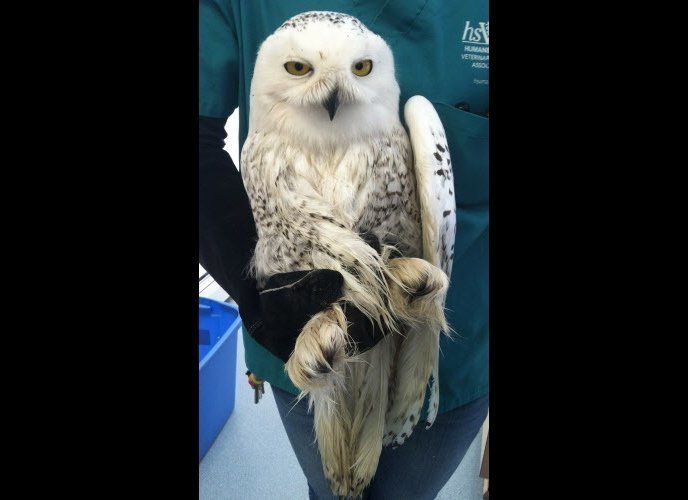We have so many touches with animals in our lives, from pets in our communities to wildlife in our backyards or open spaces. When it comes to the animals we encounter in our daily doings, the first principle is "do no harm." The HSUS and other groups also provide many services for animals in need, but we also depend on private citizens being sentinels for animals and supporting groups like ours that provide a safety net for animals in need or even in crisis.
Sometimes, even in communities where we are very intimately familiar with the entire cast of characters -- human and non-human -- there are some occasional surprises. The greatest example of this in recent weeks has been the influx of Snowy owls -- made famous by Hedwig in the Harry Potter series -- well south of their normal range. Boston has charted the largest number of Snowy owls ever recorded. The owls have also been spotted this winter in the District of Columbia, Pennsylvania, Virginia and even as far south as Arkansas, North Carolina, and Florida.
Some Snowy owls have been hit by cars, or run into power lines or aircraft. Several were shot at New York's JFK Airport in December 2013, until an outcry forced humane trapping and removal of the birds instead. Fortunately that was not the case at Boston's Logan Airport, where the birds are being trapped and moved out of harm's way.
Our Cape Wildlife Center, one of five animal care centers across the country operated by The Fund for Animals and The HSUS, is currently treating a Snowy owl who was hit by a car as he glided across a roadway in search of food. Local groups are caring for an owl struck by a bus in D.C.
While it's difficult to mitigate the effects of human activities for surprising visitors from the north who are unaware of the hazards of populated, temperate climates, we can be more much conscious of our behavior toward more familiar and common wildlife in our communities.
Sometimes we do things with the best of intentions, but our behavior contributes to the suffering of animals. For example, thousands of water birds, including ducks, geese and swans, die annually from "angel wing," a condition caused by feeding them white bread and other "people food" that is unhealthy for them.
Those providing the bread believe they are helping the birds survive; tragically, most experts contend this unhealthy diet is the major cause of angel wing, which unnaturally and permanently twists birds' wings outward, making it impossible for them to fly. Affected birds can't escape predators and are often maimed or killed. Those that manage to survive spring and summer usually die by winter, since they are unable to escape snowstorms, hurricanes and other life-threatening weather conditions. Virtually no adult birds with angel wing can survive in the wild for long.
Our Cape Wildlife Center, and most wildlife centers across the country, see many angel wing cases every year. The highest incidence of admission is usually late fall and winter, when the affected birds have grown enough for the condition to be fully and painfully apparent. If the patients treated are very young, angel wing can sometimes be reversed by splinting and repositioning the affected wing and feeding a proper diet. Even then, recovery is a challenge. For rehabilitators, it can be frustrating and emotionally taxing to see so many birds who could have survived if people knew how harmful "people food" can be for them.
If you want to feed the local ducks and geese, then please think about what is best for them. Provide treats, not full banquets. We should not make these birds dependent on handouts and we should realize their natural diets are generally best for them. Leafy kale, seedless grapes cut in half and even commercially available duck food will provide nutritious snacks for adults and children alike to view and enjoy these wild neighbors.
